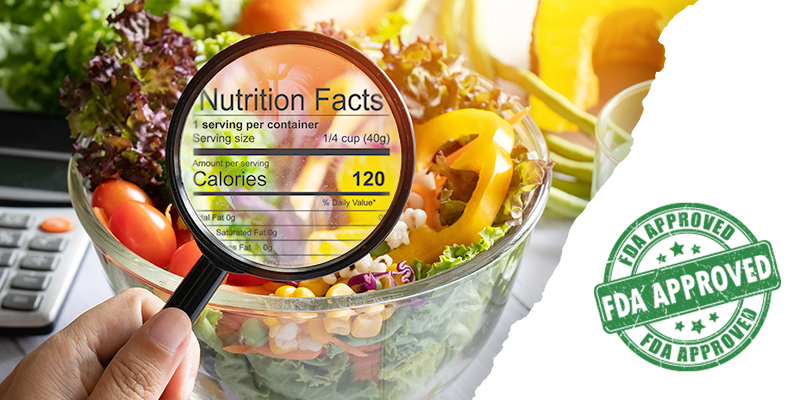
The landscape of food packaging regulations in the United States may soon undergo significant changes. Recently the FDA launched research into proposed changes to food container labels. These proposed changes would require commercial food producers to add nutrition labels to the front of food containers. The agency is in the early phases of researching the proposal from the White House, but if adopted, it will certainly mean adjustments within United States markets.
In this post, we'll explain the focus of the FDA study, outline the proposed policy, and explore the potential impact on food producers and their products. As the FDA takes steps toward enhancing consumer access to essential nutritional information, it becomes crucial for businesses to stay informed and prepared for potential labeling modifications in the future.
What Are the Current Regulations Regarding Food Labeling?
In the U.S., food manufacturers are required to put information about the product on the exterior packaging. These regulations include things like the name and address of the manufacturer or distributor, a list of any allergens, as well as ingredients used in the product. These details might be featured on the front of the box, back, or on the side of what is known as the "information panel."
While most consumers are familiar with the nutrition label on food packaging, nutritionists have argued that these panels must provide a clearer picture of what consumers need to know: Is this food healthy? Regulators and companies have been moving toward a front-of-packaging model where shoppers can quickly see as they grab an item's crucial nutritional information. In recent years, the Consumer Brands Association and the Food Industry Association agreed to a voluntary front-of-packaging system called the "Facts Up Front" program, which shows the number of calories, saturated fat, sodium, and total sugars.
What Are the Front-of-Packaging Changes Being Proposed?
In September 2022, the White House released a National Strategy to end hunger and increase healthy eating and physical activity by 2030. Part of that initiative required the FDA to study front-of-packaging labeling to help consumers quickly evaluate the nutritional contents of the food. On Friday, June 15, 2023, the FDA issued a second procedural notice announcing it is now taking comments on its plans to conduct a study on the issue.
Some of the proposed labels are abbreviated versions of the back of packaging nutrition labels that would simplify the number of calories and saturated fats. For example, instead of showing a numbered measurement of saturated fats, it would simply say low, medium, and high. Others offer nutrition tip boxes that include quantities, percentages, words, and colors that tell shoppers about the nutritional content. In contrast, some have small "high in" boxes that tell consumers quickly about the "unhealthy" ingredients within.
This proposed labeling is meant to complement the existing nutritional food packaging label on the back of the package to reduce diet-related diseases. These changes have some big supporters, including The American Cancer Society Cancer Action Network, the American Heart Association, and the Consumer Federation of America.
How Could These Changes Impact Commercial Food Producers?
To understand how this might impact your food production business, look to a recent FDA label change for insights. In 2016 the FDA changed the Nutrition Facts label to reflect updated scientific information. Manufacturers with $10 million or more in annual sales were required to update their labels by January 1, 2020. Manufacturers with less than $10 million in annual food sales had until January 1, 2021 to make the change.
According to the FDA, the front-of-packaging label change could happen as early as 2026 if the FDA continues progressing at its current pace.
"We recommend commercial food producers stay connected to their associations and watch for updates from the FDA," said Amanda Brigham, marketing communications director from Belmark, a company Lacerta frequently contracts with for labeling services.
In the past smaller producers have had more time to make the change, which is something we expect for any new significant changes to labeling requirements in the future. But that doesn't mean companies of any size shouldn't be thinking about it now. Consider how your products are presented to the consumer. Are there ingredients that will positively or negatively impact if this change is enacted? Can changes be made now?
"Now is the time to begin rethinking your products and labels, and not just concerning the potential FDA requirements," said Brigham. "Consider highlighting the health benefits of your food or any sustainable packaging or ingredient sourcing you use. Think ahead about the content of the labels as well as plan for supply so you don't end up with too much inventory."
How Your Vendors Can Help
As this proposed policy change progresses, seek guidance from your packaging supplier. Once the FDA has committed to a ruling, they can help you adjust your graphics, order what you need, and deliver it when needed to maintain shelf space.
Have questions? Talk to an expert.





